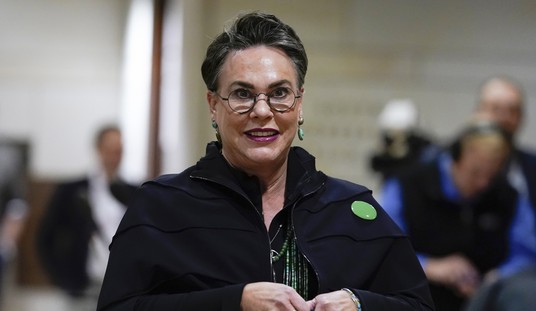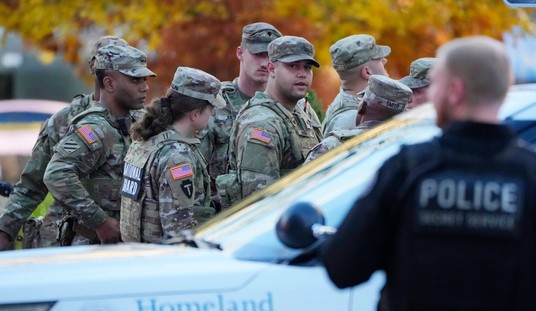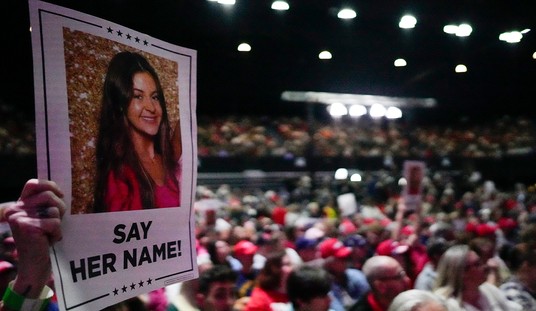
** TO GO WITH COLOMBIA MENTIROSOS EN TV ** A polygraph examiner applies electrodes on the fingers of a student at the Latin American Polygraph Institute in Bogota, Tuesday, June 12, 2007. The polygraph is all the rage in deception-weary Colombia, with more than 300 businesses using the instrument to screen employees. The prime time TV show “Nothing But the Truth” rewards contestants for taking a lie detector exam and revealing intimate details of their lives.(AP Photo/Fernando Vergara)
The attorneys for Christine Ford, the California woman who claims to have been groped by Supreme Court nominee Brett Kavanaugh on an unknown date at an unknown place, released the questions used in the polygraph she “passed.” As with so much surrounding Ford’s story, there are more questions raised than answered.
https://twitter.com/esaagar/status/1045025134040551424
This hints that far from this being a hands-off relationship, that Ford was closely coordinating with Feinstein’s office to prep this attack on Kavanaugh. What is also notable is that while Ford professed a pathological fear of flying as a reason to delay her availability to testify, in early August she flew to Maryland to take a polygraph…presumably because there are no polygraph examiners available in California.
The examiner asked only two questions.
NEW: Dr. Ford's lawyers have just released her polygraph report. pic.twitter.com/YJFXNY3W8h
— Yashar Ali 🐘 (@yashar) September 26, 2018
https://twitter.com/WiredSources/status/1045156592520482816
This process has Jonathan Turley concerned as to the usefulness of the exercise:
The most notable aspect of the story however is the only two “relevant” questions asked by Hanafin “Is any part of your statement false?” and “Did you make up any part of your statement?”
Those questions would be effectively useless in an actual case. Good polygraphers ask specific, clear, insular questions. They do not use overarching language. He did not ask specific questions on whether she was assaulted by Kavanaugh — a rather curious omission.
It is not natural way to frame such an examination and the question is whether the examination was framed or limited by Ford’s counsel. The guidelines discourage such crafting or the dropping of details:
When the questions are agreed upon, and they exclude details or the wording is a bit unusual, be sure the missing details and a discussion of the development of the relevant questions are in the report. Details that were agreed upon, but were deleted from the question, must be in the report. Persons who were not present may criticize the relevant question wording because the report does not adequately describe the question development.
I have never met a polygrapher who would structure questions like these for use in a test. If this is truly the content of the examination, I would view it as largely useless in an actual case.
And then there is this. The polygraph question is at odds with the letter Ford sent to Feinstein:
Dr. Ford's polygraph letter contradicts letter she sent to Feinstein. Polygraph letter says "4 boys and a couple of girls" were at party. Letter to Feinstein says "me and four others." No way to reconcile the two—irrespective of whether she's counting herself in polygraph letter. pic.twitter.com/aWJ10vTDna
— Charles C. W. Cooke (@charlescwcooke) September 26, 2018
This increases the number stories Ford has told about the size of the party to five.
Sorry late addition based on sworn Ford opening statement to Judiciary. Now it's "5 boys & a girl". That's FIVE different versions of who was in a small house party: https://t.co/NdD8wNjMkv https://t.co/pyZSzylVy0
— Undercover Huber (@JohnWHuber) September 26, 2018
And Ford’s team has refused to provide any back-up documentation.
More: Judiciary Committee sent letter today to Ford's attnys requesting 1) audio/visual recordings taken during Fords's polygraph; and 2) charts/data used in drawing polygraph conclusions. Ford's attnys just now refused to supply, saying such material not "important." Really?
— Kimberley Strassel (@KimStrassel) September 27, 2018
=========
=========
Like what you see? Then visit my story archive.
Follow @streiffredstate
I’m on Facebook. Drop by and join the fun there.
=========
=========













Join the conversation as a VIP Member